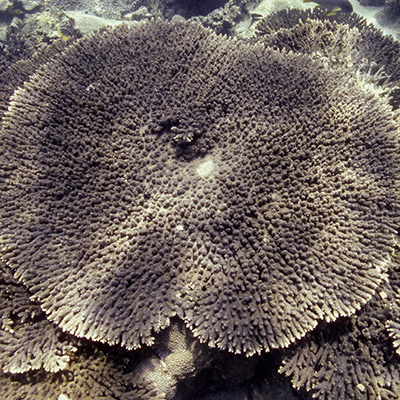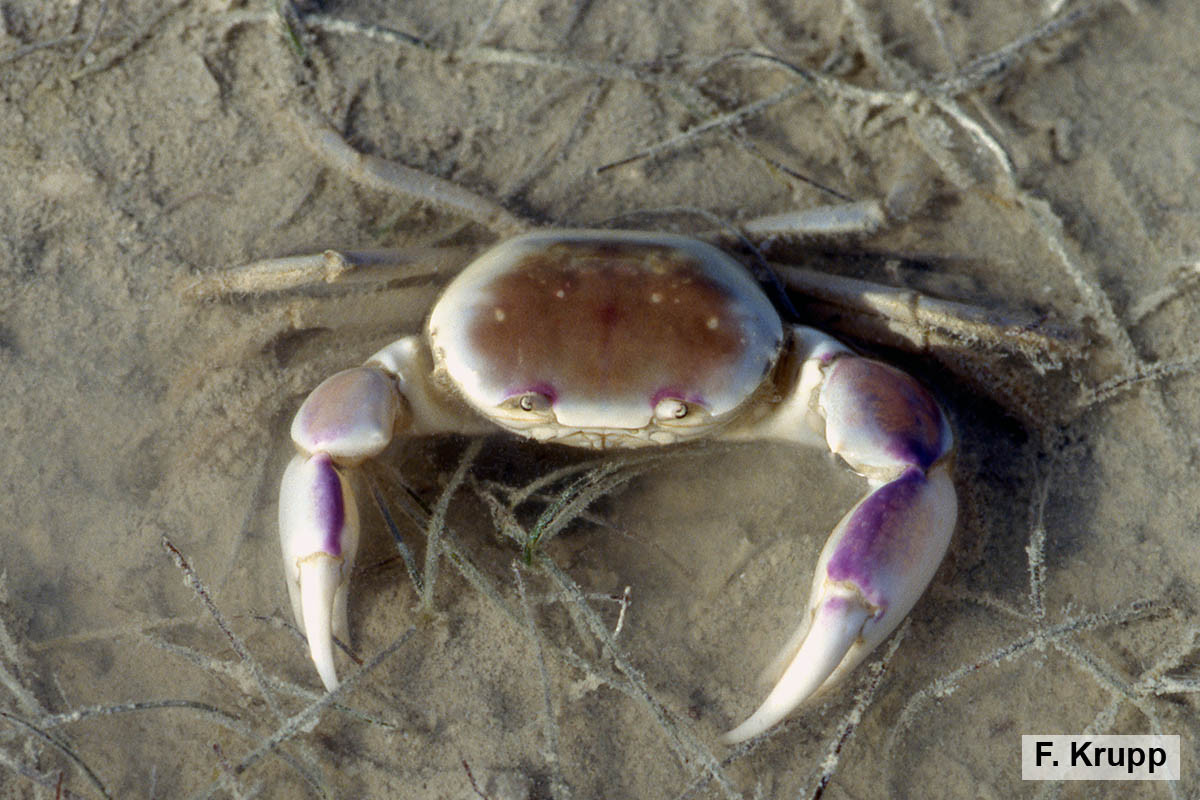Name: Eurycarcinus orientalis
Common name: Mud Crab, Violet Crab
Local name:
Scientific name: Eurycarcinus orientalis
Classification: Class: malacostracans; order: crabs (Decapoda); family: hairy crabs (Pilumnidae)
Size: Individuals of this species have a carapace size of 2.5 cm in width and 1.8 cm in length.
Habitat:
These crabs live on the bottom of the intertidal zone, burrowing in sandy and muddy substrates exposed at low tide, and are also found in holes on muddy sandflats and in mangrove lagoons. They spend minimal time on the surface or remain partially buried even when the tide is out. Being robust and slow-moving carnivores hunting for macrofauna they have strong and sharply toothed chelae with a wide gap for seizing and tearing food items, with one claw enlarged and specialized as a powerful crusher, adapted to deal with hard prey such as mollusks or other crabs.
Distribution:
Eurycarcinus orientalis ranges in the Indian Ocean from the Gulf of Aden, the Gulf of Oman and the Arabian Gulf eastward to Pakistan, India and Thailand.
Conservation status:
Eurycarcinus orientalis has not yet been assessed for the IUCN Red List of Threatened Species.
Description:
Despite their common name “hairy crabs”, many members of the crab family Pilumnidae – including this species – do not really have a hairy appearance. In fact, the broad and convex carapace of this small-sized crab has a smooth and shiny surface. It is transversely oval, with the anterolateral margins distinctly shorter than two-thirds of the length of the posterolateral margins. Its front is moderately broad and straight, squarish and obscurely incised in the midline. The anterolateral margin has three thin notches that cut it into four shallow lobes or teeth, with the first two gently rounded and the last two sharply pointed anteriorly. The claws, or chelae, on the first pair of legs (chelipeds) are robust and perfectly smooth, with only the outer surface of palm and wrist granular and the inner angle of the wrist strongly pronounced. The fingers have pointed and hooked tips and teeth on their cutting edge. The two chelipeds are markedly unequal, with the thumb of the larger chela bearing an enlarged tooth at its base. The narrow abdomen is very short and flattened and typically folded underneath the body. In males, all abdominal segments are freely movable (instead of fused), which is a diagnostic character to distinguish a species of this family from those of similar families. The ground color is white, with patches of pinkish purple on the carapace, the finger and thumb of the chelae are darker.








